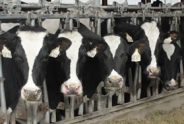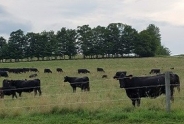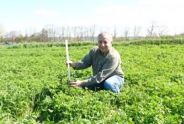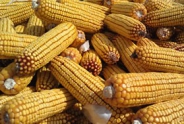Field Crop Update, June 14, 2023
Erik Smith, Area Field Crop Specialist/Team Leader
Central New York Dairy and Field Crops
1. Field Observations
The Update is a day early again this week, so here is the drought map from JUNE 8th. Most of us received about an inch (or more) of rain this week and are expecting more over the next 10 days. That's some welcome news because our hayfields and pastures have a lot of catching up to do….

2. Growing Degree Days (See: Climate Smart Farming Growing Degree Day Calculator)
Growing degree days (GDD) are calculated by taking the average daily temperature and subtracting the base temperature for development of a given organism ((High + Low)/2 - base temp = GDD). For corn silage, we are using base 50/86, as corn development starts at 50 degrees F and ceases above 86. Check your location and planting date:
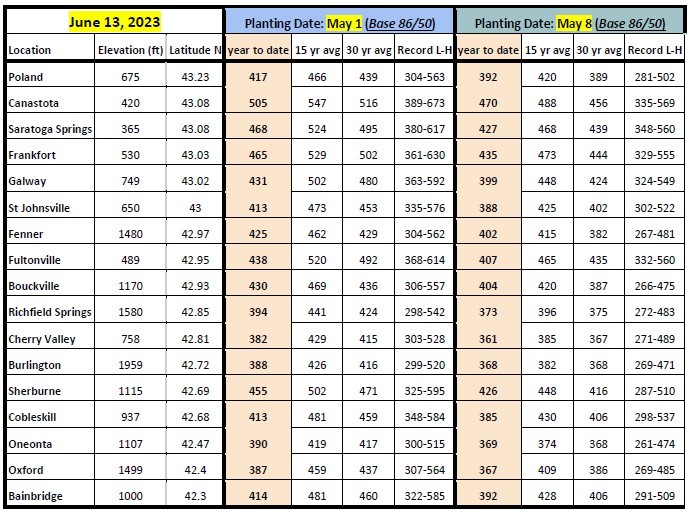
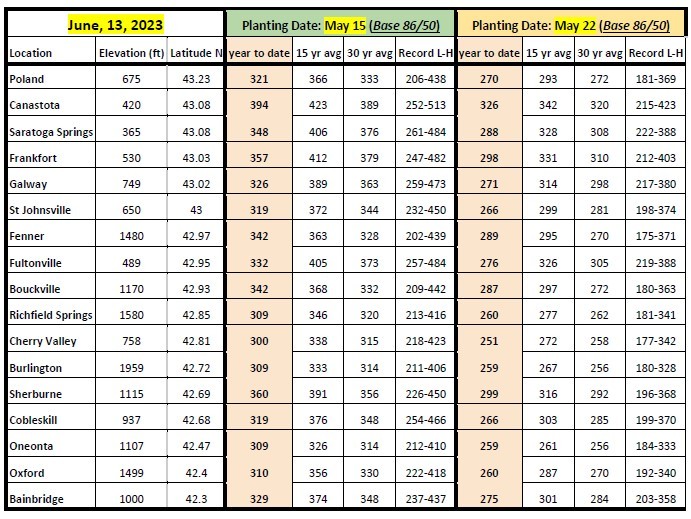
3. Pest and disease monitoring
Cereal Leaf Beetle
Be on the lookout if you've had problems in the past. Numbers are increasing each year, all over the state.
Potato Leafhopper and Alfalfa Weevil
We are seeing only very few leafhoppers (far, far below threshold), but we are still seeing alfalfa weevil damage and larvae in fields. However, the larvae are reaching their 4th and final stage before pupating in much of our region. They cause their worst damage in this stage, but spraying to control them at this advanced stage is likely not economical, especially if your stand is 16" or taller. But you may see a return if you're in a higher elevation area (cooler climate, which means the weevils will be in their earlier growth stages), your stand is at least 50% alfalfa, shorter than 16", and you're seeing damage on 50% of the alfalfa stems in your field.
Black Cutworm (BCW) and True Armyworm (TAW)
Numbers are still low this week, but I have seen some (very sparse) cutworm damage in our region. So continue to check your fields until V6 (~12") for cutworm damage.
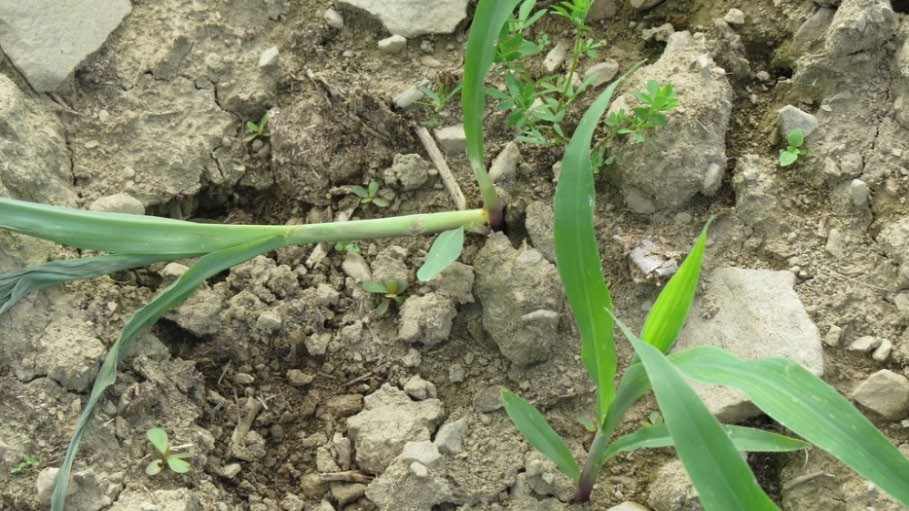
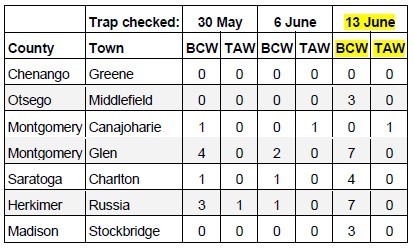
Fusarium head blight in winter grains
As winter grains begin and continue to flower, now would be the time to decide whether to protect crops from fusarium head blight. According to the Fusarium Risk Tool, the 6-day risk forecast in our region is increasing:
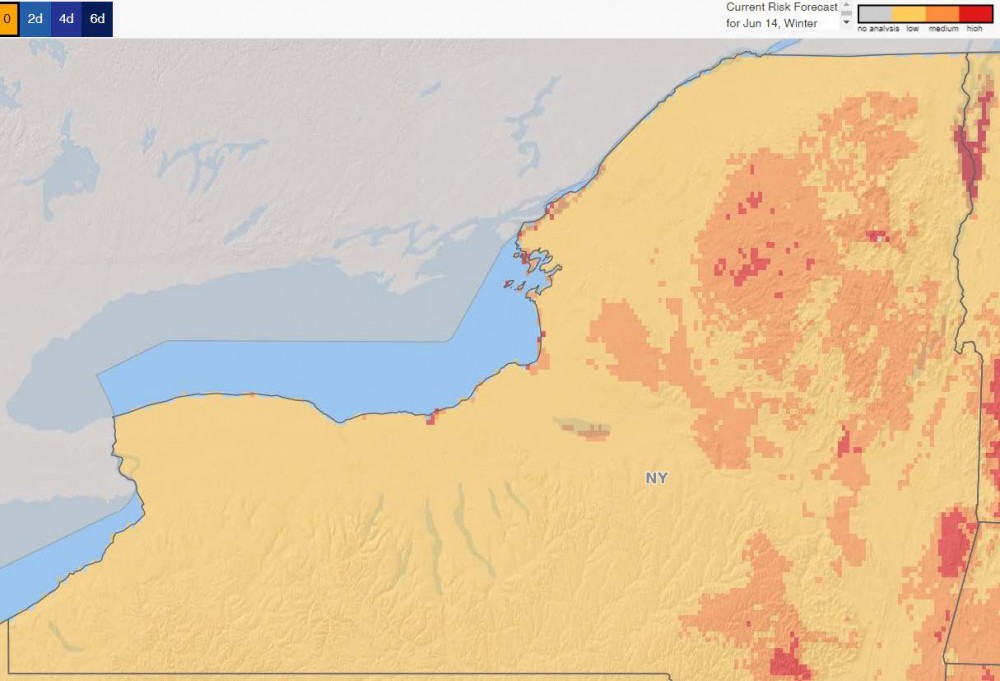
NY Jun 1, 2023 Gary Bergstrom, Extension Plant Pathologist, Cornell University
Winter wheat heads have emerged from the boot nearly everywhere and many are now flowering (yellow anthers visible) in fields across New York State. This is a critical time for making a fungicide spray decision. The fungicide products Caramba, Miravis Ace, Prosaro, Prosaro Plus, and Sphaerex are each labeled on wheat in New York and are effective in suppression of Fusarium head blight (FHB) and deoxynivalenol (DON) mycotoxin contamination. An application of these fungicide products should be based on FHB risk as well as the risks of powdery mildew, rusts, and fungal leaf blotches in the upper canopy based on scouting of individual fields. There is an application window of approximately 7 days starting at beginning of flowering in which reasonable FHB and DON suppression can be expected. Though the calculated risk of FHB infection is currently low due to dry conditions, the risk level may change in following days. Also consider microenvironments near lakes, in river valleys and next to woods that tend to have persistent dew, and other fields that have a history of mycotoxin contamination. Check the Fusarium Risk Assessment Tool and your local weather forecast frequently.
Upcoming Events
Ag Workforce Central: Virtual Office Hour
July 9, 2025
Free webinar.
IPM Strategies to Protect Corn and Soybean Seed in NYS
July 22, 2025
Cobleskill, NY
Free event. DEC Credits available
Announcements
Sign Up for Our Weekly E-Newsletter
We send out a bi-weekly e-newsletter that has announcements, upcoming programs, and opportunities for you! Registration is quick, easy, and free. Click here to sign up today!Document and Share Storm Damage
Mother nature has really been difficult over the last few days. Significant damage has been seen throughout NYS. Please let us know what types of damage your farm may have sustained during this time. This could be in the form of property damage, lost power, milk dump due to lost power, loss of livestock, loss of stored feed or growing crops.Farms are encouraged to DOCUMENT AND SHARE any impacts the weather may have had on their home or business. This could include structure damage, crop loss, inventory loss due to power outages, damage to equipment or fencing, and more.
If your farm experienced any sort of damage, please reach out to any of the folks listed below (or all of them). The more impact information that is collected, the greater the likelihood of a disaster declaration which can bring vital emergency support and awareness. The CNYDLFC Team will continue to collect detail and submit to NYSDAM and the EDEN network.
Reporting Weather Related Impacts (For your home or farm business)
- First, ensure that all the people and animals on your farm are safe, and that there aren't any unsafe working conditions created because of the weather (check your structures!). If there's an emergency, call 911 - don't try to manage it all on your own.
- Second, document all negative weather impacts for your farm and their estimated financial cost. Take photos, make estimates, and put it all in a safe place.
- Reach out to your insurance providers - farm, vehicle, crop, etc. to initiate the claim process as needed.
- Then, share your farm's damage with any (or all) of the ag support agencies listed below. We all work together to collect storm damage information and funnel it up to Ag and Markets which can initiate a natural disaster declaration.
- Chenango: 607-334-5841
- Fulton/Montgomery: 518-853-2135
- Herkimer: 315-866-7920
- Madison: 315-684-3001
- Otsego: 607-547-2536
- Schoharie: 518-234-4303
- Saratoga: 518-885-8995
- Erik Smith: 315-219-7786
- Daniela Gonzalez: 315-749-3486
- Ashley McFarland- 315-604-2156
Your county USDA/FSA service center.
- Chenango: 607-334-3231
- Fulton/Montgomery: 518-853-4015
- Herkimer: 315-866-2520
- Madison:315-824-9076
- Otsego: 607-547-8131
- Schoharie: 518-295-8600
- Saratoga: 518-692-9940
Your county farm bureau manager
- Region 3: Bailey Coon: 518-937-0566
- Region 5: John Wagner: 315-761-9770
- Region 6: Natally Batiston: 518-937-0269
- Region 7: Todd Heyn: 518-431-9338
Please let us know how we can help you.
Cash Rent and Custom Harvest Survey
To date, there is limited information available about rental rates and fees for crop harvesting. Farms can use this valuable information for their farm business planning to help improve decision making and profitability.Farmers Can Join MeatSuite For Free!
MeatSuite.com is a free resource provided by Cornell University where NY meat farmers can create a farm profile and list their bulk (wholes, halves, quarters) and bundled (i.e. Grilling Bundle) meat products.Why should farmers join?
1. It's free and easy!
2. Connect with more local customers. In the past year the MeatSuite.com farm directory had 8,300 visits from New York consumers. Farm profiles get as many as 25 views per month from potential local customers. We also spotlight MeatSuite farms on social media and bring attention and purchases to farms through highlights and giveaways.
How do I join?
Farmers can visit https://www.meatsuite.com/farmers/ to create a free farm profile. You must list at least one product for your farm's profile to go live. You'll also have access to Cornell's free Meat Price Calculator, a helpful tool for pricing your meat to make a profit.
While you're on MeatSuite, check out the "Creating Consumer-Friendly Bulk Meats" publication on the log-in page. It has tips on how to create bulk meat products that are easier for first-time buyers to say "yes" to.
If you have any questions as you create your farm profile or products, we're here to help! Please email Matt LeRoux at mnl28@cornell.edu.

